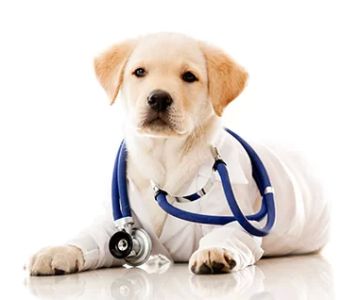Helping Your Pet Recover from Surgery
- Understanding Pet Surgery Recovery
- Essential Post-Surgery Care Tips for Pets
- How to Manage Your Pet’s Pain After Surgery
- Nutritional Support to Aid Recovery
- Monitoring Your Pet’s Recovery Progress
- When to Contact Your Vet During Recovery
Understanding Pet Surgery Recovery
When your pet undergoes surgery, whether it's a routine procedure or a more serious operation, the recovery process is an essential part of their overall well-being. Just like humans, pets need time to heal, and the right care can make a significant difference in how quickly and effectively they recover. However, post-surgery care involves much more than simply providing medication; it requires a careful balance of attention, rest, and proper nutrition to ensure your pet regains their strength and health.
As a pet owner, it’s natural to feel concerned about your furry friend’s recovery. Understanding the stages of healing and what to expect during the recovery process can help you provide the best support for your pet. Typically, pets will experience discomfort or swelling after surgery, and their activity levels may be restricted for a period of time. Depending on the type of surgery, your pet may need to wear an Elizabethan collar or be confined to a small space to prevent injury. It’s important to follow your veterinarian’s advice on managing these restrictions to promote a smooth recovery.
Essential Post-Surgery Care Tips for Pets
When your pet is recovering from surgery, there are several key steps you can take to ensure their comfort and speed up the healing process. These steps are vital to reducing the risk of complications and ensuring your pet’s recovery stays on track:
1. Keep Your Pet Calm and Comfortable
One of the most important aspects of your pet’s recovery is ensuring they have a calm and comfortable space to rest. Avoid excessive movement and excitement, as too much activity can hinder healing. Create a quiet, safe space where your pet can relax and recover. If you have other pets or young children, it may be best to keep them away from the recovering pet to reduce stress.
2. Follow Medication Instructions Carefully
Your vet will likely prescribe medication to manage your pet’s pain and prevent infection. It's essential to administer these medications exactly as directed, without missing doses. Some pets may not like taking pills, so you can try hiding the medication in a treat or using pill pockets. If you're concerned about giving medications or if your pet refuses them, don't hesitate to reach out to your veterinarian for advice.
3. Restrict Physical Activity
It’s crucial to restrict your pet’s activity to prevent them from accidentally injuring themselves during recovery. Your veterinarian may suggest limiting walks, playtime, or jumping for a specific period. A leash should be used during bathroom breaks, and if your pet is prone to jumping on furniture, consider using a crate or confinement area to keep them safe. Keeping your pet indoors and away from other animals can also prevent overexertion.
How to Manage Your Pet’s Pain After Surgery
Managing your pet’s pain after surgery is essential to ensure they are comfortable and able to heal properly. Pain relief will not only improve your pet’s well-being but also reduce stress and anxiety associated with surgery. There are several methods for pain management that your veterinarian may recommend:
1. Pain Medication
Your veterinarian will typically prescribe pain medication to manage post-surgery discomfort. Nonsteroidal anti-inflammatory drugs (NSAIDs) are commonly used to reduce inflammation and pain. Make sure to administer these medications at the recommended times, and avoid giving any human painkillers, which can be toxic to pets.
2. Alternative Therapies
In some cases, alternative therapies like acupuncture, cold laser therapy, or physical therapy may be used to relieve pain and promote healing. These treatments can be particularly beneficial for pets recovering from orthopedic surgeries or major procedures. Consult with your veterinarian to determine whether these therapies are appropriate for your pet.
3. Monitor for Signs of Discomfort
Watch for signs of excessive pain or discomfort, such as whining, limping, or reluctance to move. If your pet seems to be in distress despite medication, contact your vet immediately to assess whether the pain management plan needs to be adjusted.
Nutritional Support to Aid Recovery
Proper nutrition is a crucial component of your pet’s recovery. Just like in humans, the body needs the right nutrients to heal efficiently. Depending on your pet’s health and surgery, they may require specialized food or supplements to promote recovery:
1. High-Quality Diet
A high-quality, well-balanced diet is important for supporting your pet’s recovery. If your pet is reluctant to eat due to pain or discomfort, you may need to entice them with softer foods or treats. If your veterinarian has recommended a special diet for recovery, follow their guidelines carefully.
2. Hydration
Ensuring your pet stays hydrated is critical. Dehydration can delay the healing process and lead to further complications. Make sure your pet always has access to fresh water. If your pet is not drinking as much as usual, try offering ice chips or low-sodium broth to encourage them to drink.
3. Supplements for Joint and Bone Health
After surgery, especially if it involves bones or joints, your veterinarian might suggest supplements such as glucosamine and chondroitin to support joint health and healing. Omega-3 fatty acids can also help reduce inflammation and promote recovery. Always consult with your vet before giving your pet any supplements.
Monitoring Your Pet’s Recovery Progress
Regular monitoring is crucial for ensuring that your pet’s recovery is progressing as expected. Keep track of your pet’s appetite, energy levels, and general behavior. If your pet seems lethargic, has difficulty eating or drinking, or shows any signs of complications such as swelling or fever, contact your vet immediately.
1. Regular Check-ups
Follow-up appointments with your vet will likely be necessary to monitor the healing process and address any concerns. These check-ups are essential for making sure that your pet’s recovery is on track. Your vet may perform tests, such as blood work or X-rays, to ensure that the surgery site is healing properly.
2. Adjusting Care Based on Progress
As your pet heals, your vet may adjust their care plan. For example, they may gradually allow more activity or change their diet to accommodate a return to normal health. Stay in close contact with your vet throughout the recovery process to ensure the best outcome for your pet.
When to Contact Your Vet During Recovery
If you notice any concerning symptoms or complications during your pet’s recovery, don’t hesitate to reach out to your veterinarian. Some signs that you should contact your vet immediately include:
1. Excessive Swelling or Redness at the Surgery Site
Some swelling is normal after surgery, but excessive swelling or redness may indicate an infection or other complications.
2. Loss of Appetite or Difficulty Eating
If your pet refuses to eat or shows signs of nausea, it could be a sign that something is wrong. It’s essential to address these issues promptly to ensure your pet is getting the nutrition they need.
3. Persistent Pain or Lethargy
If your pet seems to be in constant pain despite medication, or if they are unusually lethargic, it may be necessary to reassess their recovery plan.
By staying proactive and involved in your pet’s recovery process, you can help ensure a smooth and speedy recovery. At Hidden Brook Veterinary, we provide expert care and advice to help your pet recover from surgery with the best possible outcomes.











